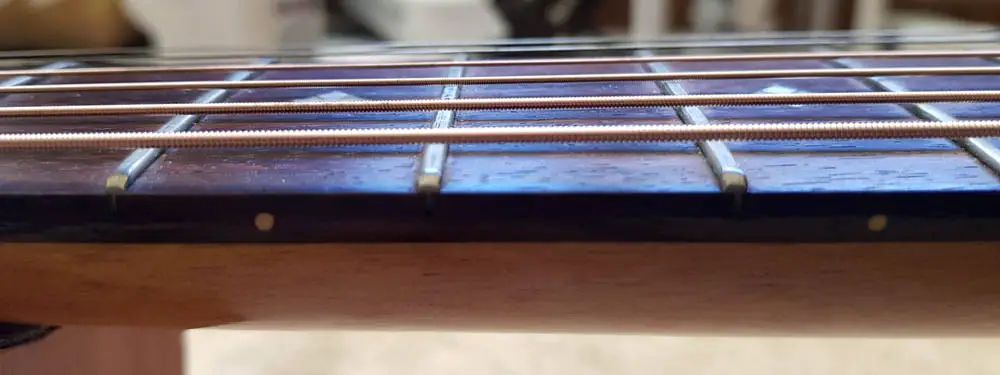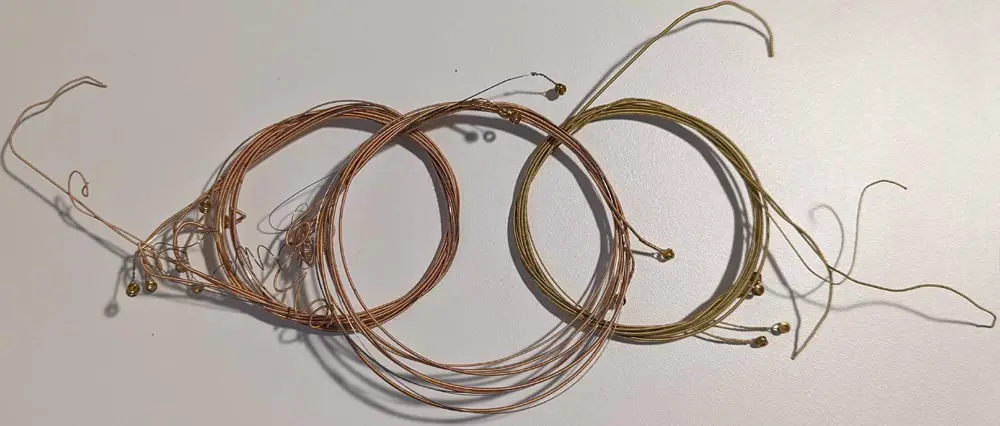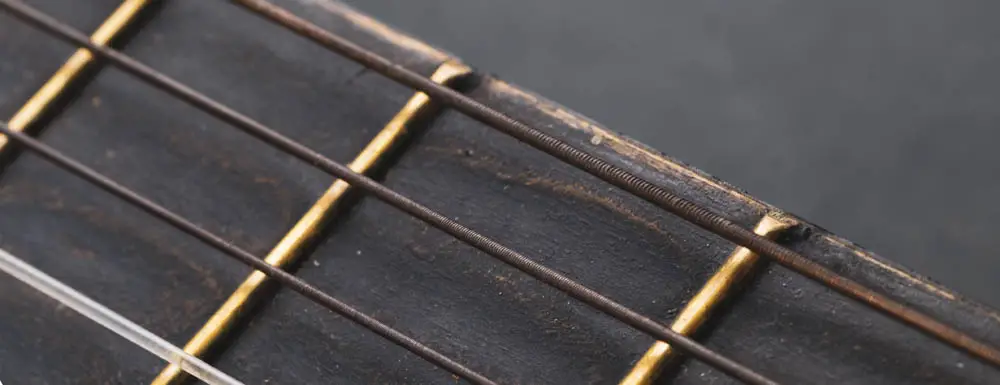How to Tell If Your Guitar Strings Are Dead (5 Major Signs)
If you’re fairly new to the world of guitar, it can be hard to know when it is time to change your strings.
There is no single rule that you need to follow, but basically when guitars start to sound bad it can be a sign that it’s time for your strings to say goodbye to your guitar.
Guitar strings don’t last forever and get worn out from rubbing on frets, dirt and oil on your fingers, and corrosion. A general rule is that strings last 3 months of regular playing, but that timeline can depend on many different factors. Coated strings will last longer than non-coated strings also.
Instead of just blindly changing your strings every few months, it’s better to learn how you can tell if your guitar strings are dead so you can get the most life out of your strings.

How to Tell When Your Guitar Strings Are Dead
1. Dull Sounding Guitar and Hard to Tune
If your guitar sounds muted and dull when you play, this is a big sign that your strings are dead.
When they get to this stage you will find there is no crisp treble sound when you strum them, and they sound very bassy and flat.
If your guitar stayed in tune nicely in the past, but now you just can’t seem to tune it so it sounds right, then your guitar is ready for a string change.
2. Dark Colored Guitar Strings
When guitar strings are new they will be a bright metallic color. Electric guitars have bright silver colored strings, and acoustic guitars can have strings that look like copper or bronze.

Over time they get built up with dirt and oil from your fingers and slowly lose their brightness, becoming generally dull looking.
Try comparing your guitar strings to a new set (or a picture of new strings online), and if your strings look very dull with no shine to them it’s time to change your dead strings.

3. Dirty Sections on Strings
Sometimes strings can be bright in some sections and dull in areas where you play the most.
Try moving your guitar around in some good light while you carefully look at the strings. If you can see darker dull areas on your strings with bright stripes where the frets touch them, then your strings are becoming worn.
Your strings may still be ok for a little while if your guitar still sounds good, but it is a good sign that you will need some new strings in the near future.
4. Worn or Frayed Strings
Strings wear out as you play them, mostly getting worn where you press them onto the frets.
If you look closely at your strings and can see shiny flattened stripes where they touch the frets, then they are getting very worn and could even break as you play.
With nylon string guitars, they have an outer wire wrapped around a nylon core, and if the outer winding is broken you can see frayed nylon at the break. Strings like this are completely dead, and need to be changed straight away.
5. Rusted (corroded) Strings

As strings age and are exposed to dirt and moisture they can rust over time.
Sometimes a rusted string can just look black, and on electric guitars can even have patches of brown rust on them.
Corroded strings are completely dead, and you will never get a good sound from them. They need to be changed immediately.
Frequently Asked Questions
Can I just Change A Single Guitar String?
If your guitar strings are quite new and one breaks, then it is fine to change that one string. If your strings are in reasonable condition and you break one small string (high E or B string), then often you can just change that one string and still get a good sound.
For guitars with older strings it usually isn’t worth changing just one string, as the tone of the new string will not sound good with the tone of the old strings.
Should I Change My Guitar Strings Every 3 Months?
Some people play their guitar more than others, so it isn’t always necessary to change your strings this often.
You can make your strings last longer by:
- washing your hands before playing.
- Cleaning your strings with a soft cloth after playing.
- Keeping your guitar in a case.
If your guitar still sounds good to you, then there is no need to change your strings. Some people even like the sound of old strings on an electric guitar.
Do Strings Last Longer on Acoustic Guitars than Electric Guitars?
Leaving your strings on longer is more common on acoustic guitars than it is on electrics.
Acoustic guitar strings are usually higher gauge than electric strings, meaning they can take far more of a beating before they weaken to the point of breaking.
Acoustic strings are also made with bronze which means they don’t rust like electric strings that are made with nickel. Corrosion is the enemy of your strings, and can cause electric guitar strings to prematurely break.
The bridge on an acoustic is also gentler on the strings, preventing knots from forming and causing string breakage.
Do Coated Guitar Strings Last Longer?
There’s a difference in the lifespan of your strings depending on what materials they’re made from.
Possibly the biggest thing that can prolong the life of your guitar strings is if they are coated. Coasted strings can sometimes last 3 to 4 times longer than uncoated strings.
The extra coating helps to keep your strings clean and helps offset the effects that sweat and oils from your fingertips have on your strings.
These strings are more expensive than regular strings, but could end up being cheaper in the long run if you need to change them less often.



